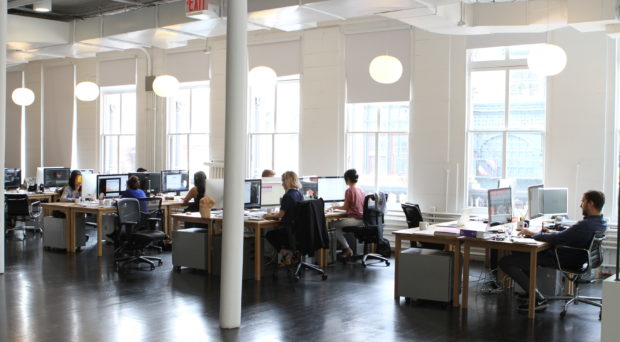
Many of us spend the majority of our work day seated at desk jobs, despite the common knowledge that long periods of inactivity can be detrimental to our health. While some inventions to improve health have been introduced into workplaces, such as sit-stand desks, they fail to take into account worker preferences. New research published in BMC Research Notes investigates the activity preferences of employees in order to better understand how to integrate various measures into the workplace, which may improve the overall health of the office-based workforce.
This nationwide study took place in Germany in the form of an office worker survey, where 2830 adults over the age of 18 took part in the questionnaire with a 53% male and 47% female split. The results give an indication of what workers want; to sit less and stand, walk and undertake physical activity more during their working day. The longer the work day, the less time survey participants wanted to spend sitting and the greater their desire to stand.
An inactive lifestyle can increase the risk of developing heart disease and certain types of cancer and diabetes. Inactivity can also decrease overall life expectancy. A recent study found that the ideal amount of time spent standing and undertaking physical activity for our health in a standard 8 hour work day is a progression from 2 to 4 hours. Interestingly, the study mirrors the results of the BMC Research Notes study wherein researchers found there was a preference by workers to sit for no more than 4 hours in an 8 hour work day.
Despite the desire to remain seated for only half of the working day, workers reported spending on average 70% of their day seated. Changing this behavior requires various interventions and changes to the workplace. Sit-stand desks and other measures to increase standing have often been introduced without taking workers preferences for standing, walking or other physical activity into account, which may give an indication as to why there has been limited success in the overall reduction of sitting time in the workplace. This study indicates that physical activity and walking is preferred to simply standing and on average found that workers would rather spend 46 minutes more each day walking, and 26 minutes more standing in a standard 8 hour work day.

To integrate potential interventions requires a change in behavior, a change in the social norms for office workers, a positive attitude as well as personal regulation and control. With the right motivations, such as taking worker preferences into account, a reduction in the amount of time spent sitting at work could be achieved through introducing complimentary countermeasures which may encourage compliance.
Interventions should therefore exist with the intention of habit-breaking. Methods suggested by the researchers include environmental modifications, active design building, behavior change strategies, supportive workplace policies for more physical activity and the continued introduction of sit-stand desks.
Comments